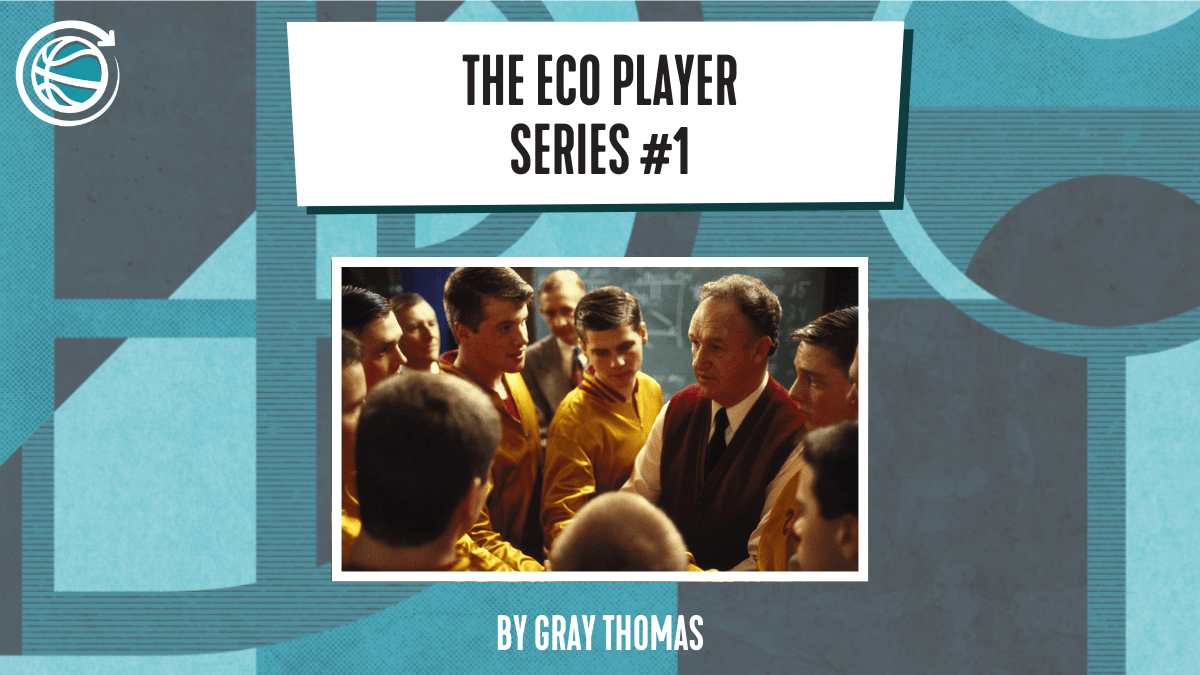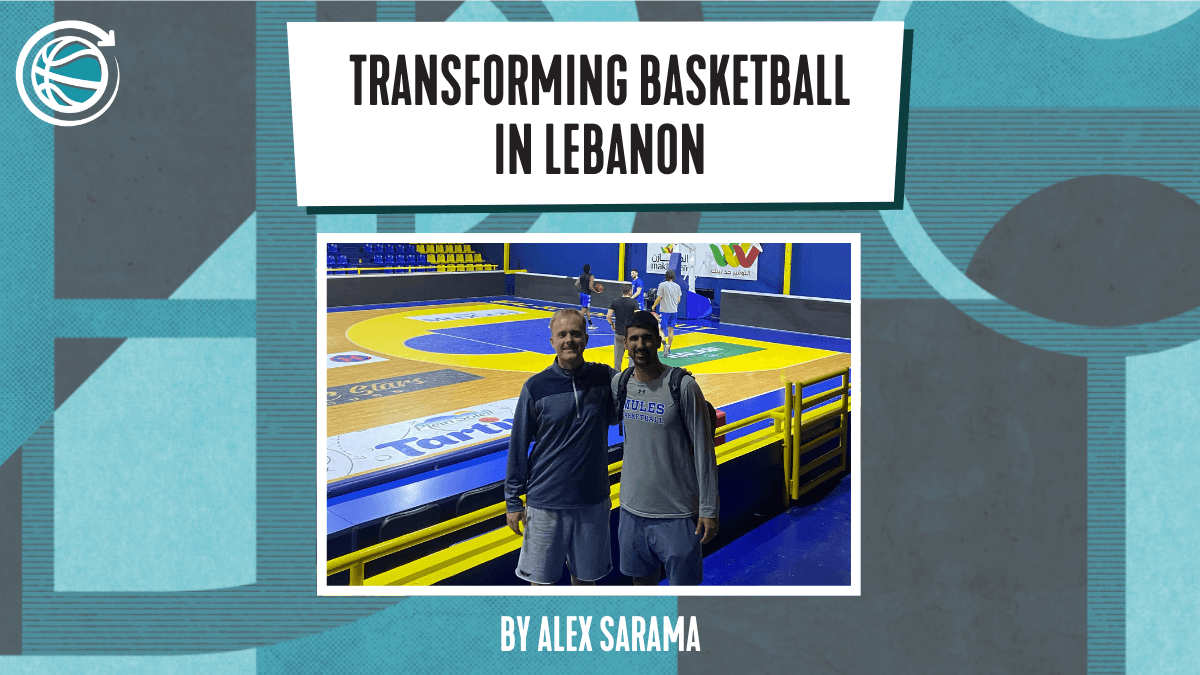Eco Player Series Part 1


I have a background in ecological psychology and have been conducting a variety of research at UConn’s renowned Center for the Ecological Study of Perception and Action. I also have a passion for hoops and love nothing more than seeing the game played at a high level. As I gained more experience with the approach, I noticed that the way that I watched the game and even listened to how it was discussed began to change.
Now, a Steph Curry workout feels like watching Nikola Tesla in the laboratory, both seeing the world and dazzling the rest of us in ways that few can. I even have the urge to pull over anytime that I pass by a court and see a player dribbling through cones to ask them if they have 15 minutes to chat! This sounds like zealot-talk, but I am just doing what most of us do when we feel like we have found a more useful way to do things – they want to share it!
When it gets down to it, that is all I really want to do in this space. I know that one of the best ways to understand something is to see examples of it in practice. Alex already does a wonderful job of doing that with everything that Transforming Basketball shares.. Thus, I felt a good path to take for my first content for Transforming Basketball would be a series highlighting examples of players talking about the game ecologically.
Let me start by asking this – how many times have you heard a player mention how playing against chairs elevated their game? In this scene from Hoosiers, the following exchange occurs:
Coach Norman Dale: “Let’s move. Come on, let’s move.”
Player: “But when do we scrimmage?”
Coach: “We don’t scrimmage. No shooting either.”
Player: “That ain’t no fun!
Coach: “My practices aren’t designed for your enjoyment.”
If I could sum up the traditional approach in one example, it would be that drill and exchange. To return to my question about players lauding chair drills… you would be hard pressed to find good examples, if any at all. I make this point to bring your attention to how the players themselves talk about perceiving and acting in the game. For my first example, I will share a few clips from Jalen Williams (“JDub”) of the Oklahoma City Thunder talking about the game. The videos will be from two primary sources:
- A video that Jalen did with League Him where he breaks down old clips from his games in college at Santa Clara.
- An interview with JJ Redick on his show The Old Man & The Three.
- Jalen Williams led the league in dunks at the guard position last season, and this is largely in part due to his tremendous ability to read the defense and cut backdoor at just the right time. In this clip, Jalen talks about how he can get a few extra buckets each game just by perceiving where the defense is looking, not just with their eyes, but with their heads (i.e., their entire visual perceptual system). He doesn’t mention an explicit “if this, then that”, predetermined rule he follows. He talks about the game as being actively engaged with the unfolding dynamics to take advantage of the affordance landscape.
- Here is another example of JDub describing the affordance landscape in particular moments and how it changes as a result of players’ continuous actions. When he references the height of players and their positioning on the floor, Jalen is demonstrating what he is attuned to during the play. This is also evident in how he talks about using deception to take advantage of affordances that may be nested in other events throughout the game. When he realizes that players are behaving in a particular way in response to his pull-up, he can appeal to another move (e.g., the fadeaway) that is nested within performing the pull-up enough times that deception is possible to facilitate an open fadeaway. This sort of retrospective (e.g., recalling what happened in previous instances), prospective (e.g., realizing that faking one thing may lead to another in the future), and flexible (e.g., finding different means to the same end) are hallmarks of the ecological approach to perception-action.
- In this clip, JJ is referencing a sequence in a game where Williams dunked, ran back on defense to block a shot, and followed that with a putback dunk. Redick asks him about the clarity of his mind and what he is thinking or “hunting” when there are multiple plays in a row like that. JDub replies by emphasizing how important context is for each play, and how it is different from day-to-day and game-to-game. He notices that one game is not affording a lot of success for his layups, so he transitions to dunking the ball. Again, we are seeing him reflect an ecological approach to the game where the unfolding dynamics will predicate what is available to him as a player.
- This clip is simple from an ecological standpoint: Jalen is asked about what it is like to have a 7’2” (!!!) wingspan, and he proceeds to talk about things that he has noticed he is able to do in the game due to his physiology and effectivities (i.e., capabilities, skillset). He also touches on how the development was rocky before finding his groove.
- So far, I have talked about Jalen on an individual level, but we can see these principles at the team level as well. Here is a quote from Jalen after OKC’s win against Phoenix on 11/12/23:
“We have a group of guys that like playing with each other. Tonight, and just throughout the whole season, I think we’ve done a good job of covering for each other and talking.” – (Nick Gallo on Twitter)
What he is describing is reciprocal compensation, which is a hallmark of interpersonal synergies (Araújo & Davids, 2016) in the eco approach. Briefly, an interpersonal synergy is a dynamic system consisting of more than one person coupled together by information where the individual actions and interactions self-organize, which leads to stable patterns of communication and cooperation (Dale et. al, 2013). Two characteristics of an interpersonal synergy are dimensional compression (e.g., instead of five players, there is one lineup) and reciprocal compensation (e.g., my teammate can’t hit a shot tonight, so I need to step up). Jalen did not have to break things down in all of those words to get the point across, but the principles are there and underlying successful performance.
- The final clip is Jalen talking about how learning every position set him up to succeed in the NBA. It facilitated quick learning for playing off the ball and understanding not only what his spacing should be but also for others on the court. From my perspective, Jalen Williams is an ecologically, well-rounded player.
The drill and the quote at the beginning of this article exemplified the traditional approach to skill development in basketball. However, Coach Dale redeems himself by stating the goal for his team that the quote from Jalen and the final clip should support:
Coach Dale: “Five players on the floor functioning as one single unit: team, team, team – no one more important than the other.”
Araújo, D., & Davids, K. (2016). Team synergies in sport: theory and measures. Frontiers in psychology, 7, 1449.Dale, R., Fusaroli, R., Duran, N. D., & Richardson, D. C. (2013). The self-organization of human interaction. In Psychology of learning and motivation (Vol. 59, pp. 43-95). Academic Press.
Learn more from Gray Thomas in his guest episode on the Transforming Basketball Podcast…
























